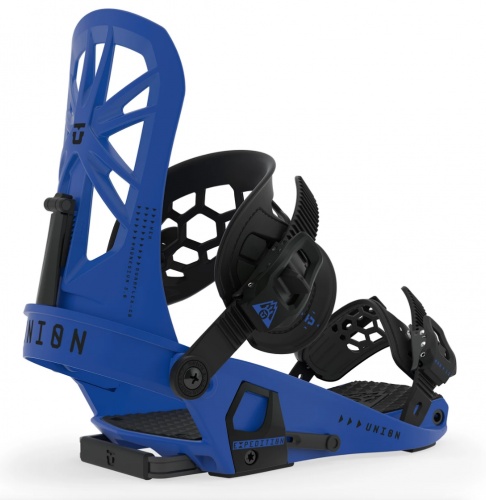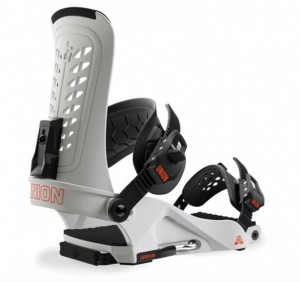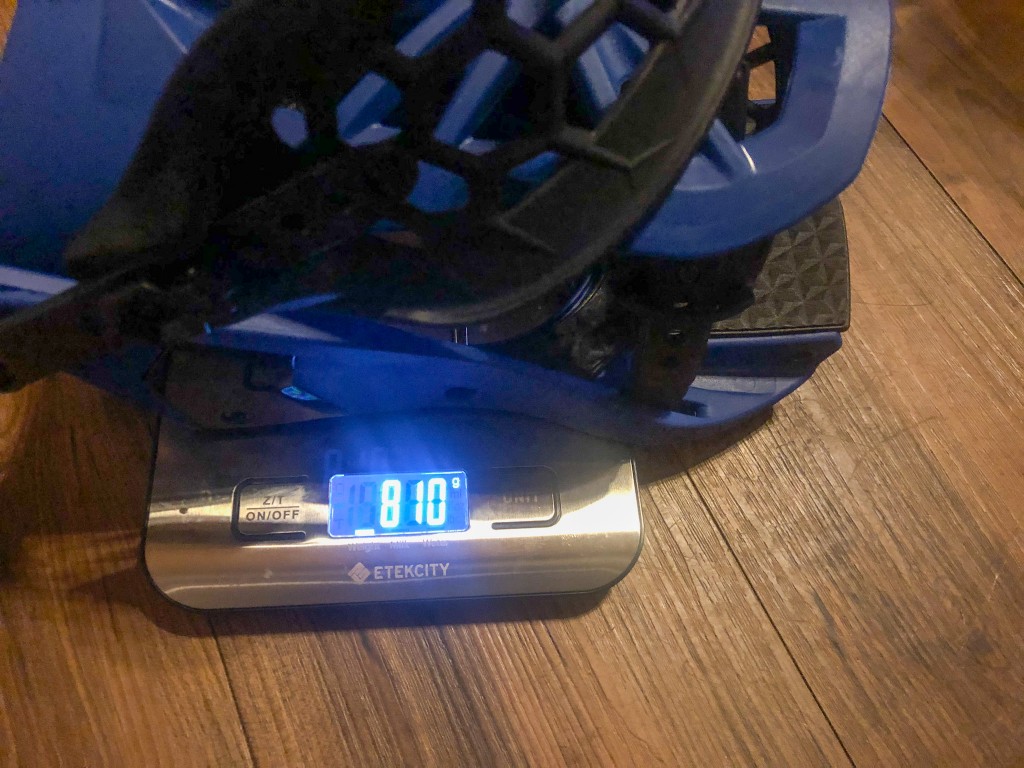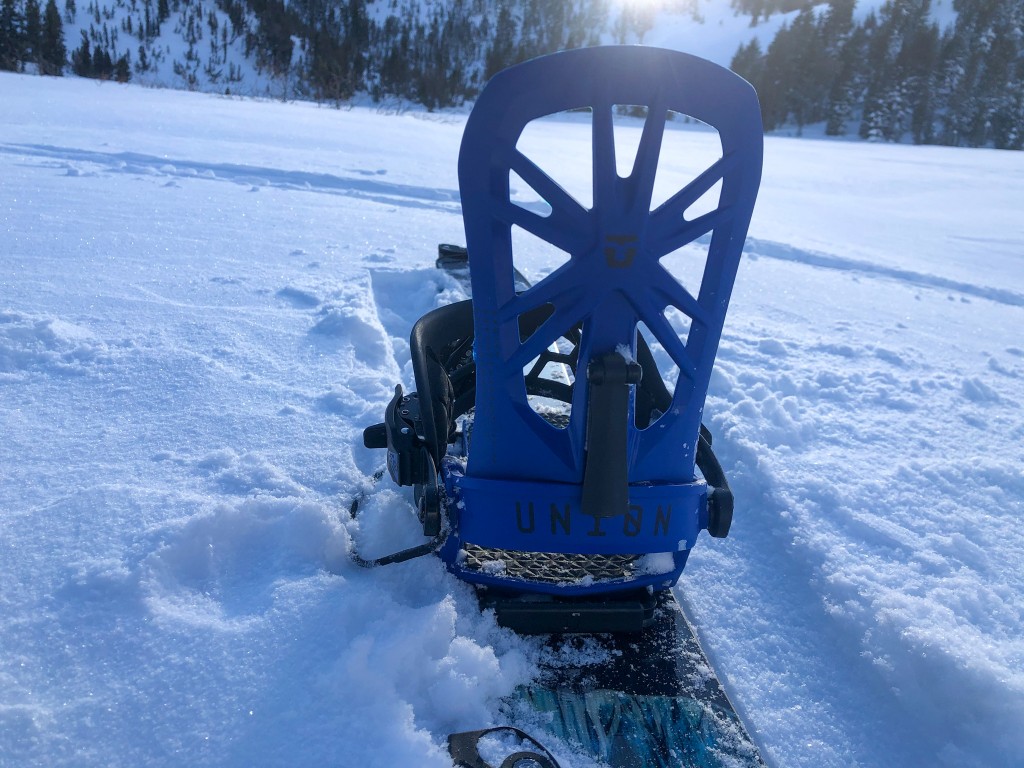Union Expedition 2.0 Review
Our Verdict
Our Analysis and Test Results
Product Changes from 2019 to 2020
Union released the Expedition 2.0 in the fall of 2019. They have redesigned the binding and made modifications to the interface, which addresses the main issues from the previous expedition. Conceptually, the interface remains the same; a pin that slides in the middle of the binding. Last year, even when set up correctly, the bindings had a few degrees of play. Union tightened up the allowance between the pucks and the receptacle on the base tray of the binding to address the swivel issue. The pin also rotates toward the heel in a receptacle rather than the toe and in the way. The binding itself received a few updates to boast durability.
After having tested the Expedition 2.0, the upgrades to the model have significantly increased the quality of experience when using the binding. The swivel is no longer present, and the pin is more user-friendly.
The Expedition 2.0 is the company's take on a splitboard binding. Their goal was to make a binding that is less rigid, more comfortable, and more like a standard snowboard binding. The binding is one of the few pin-based systems that still exist on the market. However, it is differentiated by the location of the pin, which is in the middle of the binding.
Performance Comparison
Uphill Performance
When the bindings are in tour mode and it's time to ascend, the Expedition 2.0 tours in great comfort. The base plate has a plush layer of EVA foam that is nice for long days of touring, while the robust side arms provide solid sidehilling performance. The touring action is fluid and seems to have above-average friction relative to other options on the market.
The bushings of the touring brackets seem to wear out quicker than expected. This creates play between the pin and the touring bracket. This play is felt as a light side to side motion of the binding on each step.
Weight
The field weight of the Expedition 2.0 is four pounds, 9.6 ounces. This includes the touring brackets, riding pucks, screws, and bindings. If we break it down to weight per binding, you'll find yourself looking at one pound, 12.22 ounces per binding. This is slightly skewed to the heavier end of the spectrum for a splitboard binding relative to the ultra-light and the heavyweight models.
Transitions
Transitions on the Expedition 2.0 facilitate the function. They transition but require more steps than the average system. We find the pin system to be outdated, especially when placed in the middle of the binding. This can complicate the process when challenging environmental are present, which might cause snow and ice to impede the pin or requires you to be wearing your larger set of gloves.
The transition from tour mode to ride mode requires that you place the middle of the binding on the center disk with the toe ramp and high back oriented to the tip and tail of the board. Then the user rotates the binding in the correct direction, which aligns the pinhole of the binding with the pin slot of the disks. The 90-degree movement is a good mechanism to clear snow, which helps prevent snow blockages. If you are familiar with the previous model, you will remember that the correct alignment was hard to locate as it could spin infinitely. The Expedition 2.0 has a stopping feature that doesn't allow the binding to rotate past the pin slot.
The transition from ride to tour mode on this model is similar to most pin based binding. We are excited to see the transition system of the Expedition 2.0 improve. Currently, the centrally located pin system makes the Expedition 2.0 best for shorter, simpler days, where fewer transitions are required.
Downhill Performance
Fortunately, Union has fixed the permanent disco foot that was our primary complaint about the previous model. Now, descending is the bread and butter of the Expedition 2.0, and it provides a very consistent, playful feel that doesn't compromise response. It carries that classic, smooth Union feel that has made the brand a beloved binding company. This model has more freestyle rather than freeride inspirations to encourage tweaked airs and playful supported turns.
Straps, Lean, and Risers
Straps
Union has been in the binding game for some time. The comfort and user-friendliness of the straps and buckles are representations of that. The straps have a lot of negative space, which reduces weight and also limits the potential for pressure points.
Lean Adjuster
The lean adjuster is a thin tab that has limited movement. To engage walk mode, you have to flex out the tab, so it no longer rests on the heel cup. It can be challenging to engage in use with gloves on. The lean adjuster provides noticeably less negative lean than other binding options and can be felt at the peak extension of the stride of flatter terrain.
Heel Riser
The heel riser is easy to deploy with a ski pole and provides sufficient height but only offers one height setting. Also, the Expedition 2.0 lacks a strike plate. The heel riser has a rubber bumper, and the base plate has small foam pads in the corner to absorb shock. This design could put more abuse and force on the board when touring, especially if ski kicking as a form of taking observations on small, inconsequential terrain features.
Value
The Expedition 2.0 is a lower-priced splitboard binding that has excellent downhill performance and could be a good value for the correct person. Options exist on the market for a marginal increase in price, that will offer better well-rounded performance.
Women's Version
Currently, no women's version exists of these bindings. However, the binding will accommodate a US women's 6 to 11.
Conclusion
The Union Expedition 2.0 offers exceptional downhill performance, and stays true to the feel of Union bindings. The centrally located pin based transition system to have some pitfalls, especially in challenging conditions. The model has experienced refinement in every metric, and we are looking forward to improvements, especially in the transition system. The Expedition 2.0 is ideal for beginner to intermediate splitboarders looking for a freestyle feel and are willing to sacrifice some uphill efficiency and ease of transitions.













